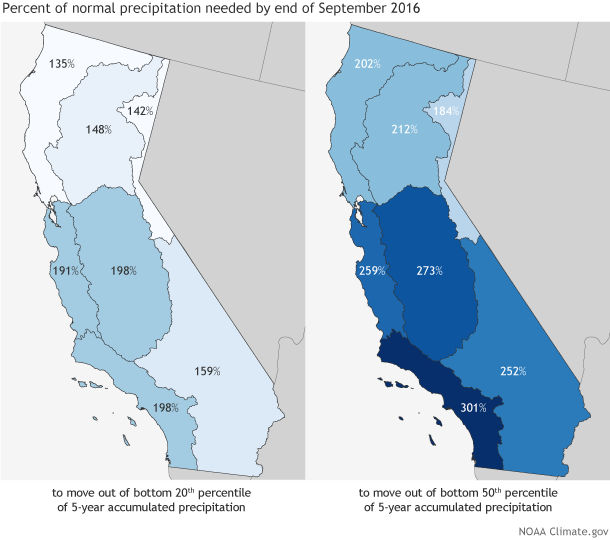Region needs an improbable 190% of its usual rainfall to edge out of its drought


The Bay Area needs to receive more than 190% of its typical precipitation in order to be considered out of its drought. In this case, out of the drought means out of the bottom 20% of all five-year periods in the historical record. And the odds don’t favor higher-than-nornal precipitation in northern California.
According to climate.gov, “This is a ton of rain/snow.”
Also, there is only a 33% to 40% chance that winter will be wetter than normal this year, because El Niño is experienced much more strongly in southern California than in the middle of the state. The probability may be even lower than that, because the Bay Area is on the edge of that probability zone.
The jury is still out, though, on northern California. In the past, the connection between wet winters and El Niño has been less reliable in the northern part of the state than the southern part. But according to a new analysis by the NOAA Drought Task Force, the odds for a wet winter across the entire state improve the stronger the El Niño event is, and the 2015-16 event is currently forecast to remain strong through winter.
There’s a lot more information in the linked article.
Add a comment using Coastsider Forum
Click the blue Discussion link below to comment on this story. Your comments on this story's Coastsider Forum topic will appear below.
